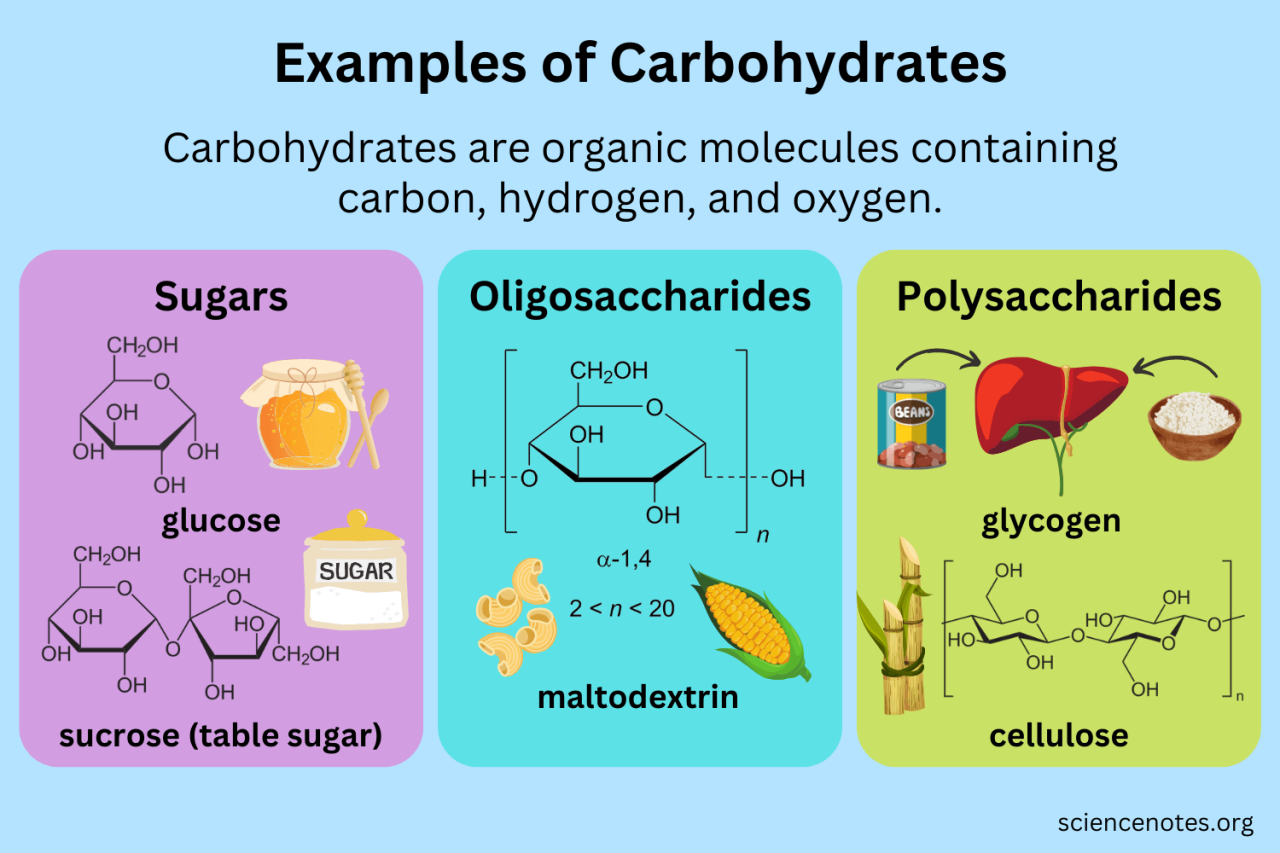
Essential Guide to Carbs: Your Roadmap to Understanding and Enjoying Them
Essential Guide to Carbs: You’ve heard it all – carbs are good, carbs are bad, carbs are the enemy. But what’s the truth? The truth is, carbohydrates are essential for life, providing our bodies with energy and fueling everything from brain function to muscle recovery.
But navigating the world of carbs can be tricky. This guide will help you understand the different types of carbs, how they affect your body, and how to make smart choices to fuel your best life.
We’ll break down the different types of carbohydrates – simple, complex, and fiber – and explain their roles in your diet. We’ll also explore the glycemic index, a tool for understanding how different foods affect blood sugar levels. And we’ll dive into the essential role of carbs in maintaining a healthy weight and managing specific health conditions.
Understanding Carbohydrates

Carbohydrates are one of the three macronutrients, along with proteins and fats, that are essential for human health. They are the body’s primary source of energy and play a crucial role in various bodily functions.
Types of Carbohydrates, Essential guide to carbs
Carbohydrates are classified into three main types based on their chemical structure and how they are digested: simple carbohydrates, complex carbohydrates, and fiber.
- Simple carbohydrates, also known as sugars, are quickly absorbed by the body and provide a rapid burst of energy. They are found in fruits, vegetables, milk, and processed foods like candy and soda.
- Complex carbohydrates, also known as starches, are made up of long chains of sugar molecules and are digested more slowly, providing a sustained release of energy. They are found in whole grains, legumes, and starchy vegetables like potatoes and corn.
- Fiberis a type of complex carbohydrate that cannot be digested by the human body. It adds bulk to the stool and helps regulate bowel movements. It is found in fruits, vegetables, whole grains, and legumes.
Glycemic Index
The glycemic index (GI) is a measure of how quickly a food raises blood sugar levels after consumption. Foods with a high GI are rapidly digested and cause a sharp spike in blood sugar, while foods with a low GI are digested more slowly and cause a gradual increase in blood sugar.
The GI of a food is influenced by factors such as the type of carbohydrate, the processing method, and the presence of fiber.
- High GI foodsinclude white bread, potatoes, and sugary drinks.
- Low GI foodsinclude whole grains, legumes, and most fruits and vegetables.
Importance of Carbohydrates
Carbohydrates are essential for several reasons:
- Energy source: Carbohydrates are the body’s primary source of energy, providing fuel for muscle activity, brain function, and other vital processes.
- Nutrient transport: Carbohydrates are involved in the transport of nutrients throughout the body.
- Cell structure: Carbohydrates are a component of cell membranes and other cellular structures.
- Blood sugar regulation: Carbohydrates play a crucial role in regulating blood sugar levels.
Closing Summary: Essential Guide To Carbs

This guide provides a solid foundation for understanding carbohydrates and their impact on your health. It’s about making informed choices and incorporating carbs into your diet in a way that supports your overall well-being. Remember, a balanced approach is key.
So ditch the restrictive diets and embrace a healthy relationship with carbs that fuels your energy, supports your health, and allows you to enjoy delicious and satisfying meals.
Understanding carbs is key to any fitness journey, but sometimes the focus on calorie counting can leave us wondering about other important factors. For instance, did you know that building muscle through weight training can actually boost your metabolism and help you burn more calories even at rest?
If you’re curious about how can lifting weights help you lose fat , I encourage you to check out this article. It’s a great way to learn more about how exercise and diet work together to achieve your fitness goals.
And, of course, don’t forget to check out my essential guide to carbs, where I’ll break down the different types of carbs and how they can fit into a healthy lifestyle.
My essential guide to carbs emphasizes the importance of timing your intake, especially after a workout. While you’re focusing on replenishing your glycogen stores, don’t forget about the power of music! Check out this article on how your post workout music has a big impact on your recovery , it’s a great reminder that recovery is about more than just food.
Once you’ve got your playlist sorted, you can return to the guide and learn how to make the most of those carbs for optimal muscle growth and performance.
Navigating the world of carbs can feel like a maze, but understanding their role in our energy levels and overall health is key. Sometimes, though, the stress of figuring it all out can leave us feeling overwhelmed. That’s where finding a little calm comes in, and I’ve discovered that breathing exercises for every mood can be a fantastic way to regain a sense of control.
After a few deep breaths, I feel much more equipped to tackle those complex carb choices with a clearer head and a calmer approach.






